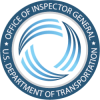What We Looked AtThe Federal Aviation Administration (FAA) employs over 14,000 air traffic controllers to operate 314 air traffic control facilities nationwide. As inefficient facility scheduling can lead to staffing issues and increased overtime costs, in July 2016, FAA and the National Air Traffic Controllers Association (NATCA) agreed to implement a commercially available tool, Operational Planning and Scheduling (OPAS), to standardize scheduling practices at all air traffic facilities. In 2017, the House Appropriations Committee directed OIG to review FAA's progress in implementing a controller scheduling tool and determine whether it is benefiting air traffic managers. Accordingly, our audit objectives were to (1) determine FAA's progress in adopting and implementing a scheduling tool and (2) identify any challenges that will need to be addressed to realize potential benefits.What We FoundAfter 2 years, FAA's air traffic control facilities remain without a standardized scheduling tool. Upon reviewing recommendations from a joint FAA-NATCA workgroup, the Agency decided to use OPAS as a management-only tool, used by managers to create the basic watch schedule, and another system, Air Traffic Operational Management System (ATOMS), to capture the real-time work assignments of air traffic controllers. According to FAA officials, this requires the Agency to modify the scope of OPAS and develop its own daily scheduler, which has extended the project timeline. Thus, FAA remains several years away from deploying a scheduling tool. FAA also faces significant challenges before it can realize the benefits of such a tool. In the 8 years since OPAS was procured for testing purposes at a cost of $17 million, FAA has not established a finalized plan with the dates, system needs, potential risks, and costs of deployment. In addition, FAA's decision to partially implement OPAS and ATOMS increased the level of complexity, and the ATOMS scheduling capability has not been field tested. Training and deployment requirements may change over time. As a result, FAA does not know the final cost or how long it will take to deploy a scheduling tool for the controller workforce.Our RecommendationsWe made two recommendations to help FAA implement a standardized scheduling tool at its air traffic control facilities, and FAA concurred with both recommendations.
Open Recommendations
| Recommendation Number | Significant Recommendation | Recommended Questioned Costs | Recommended Funds for Better Use | Additional Details | |
|---|---|---|---|---|---|
| 1 | Yes | $0 | $0 | ||
| Develop an implementation plan for deploying a scheduling system for controllers that includes schedule milestones, system requirements, risk assessment and mitigation, and funding requirements. | |||||
| 2 | Yes | $0 | $0 | ||
| Assess and quantify the expected benefits of a customized controller scheduling tool. | |||||


